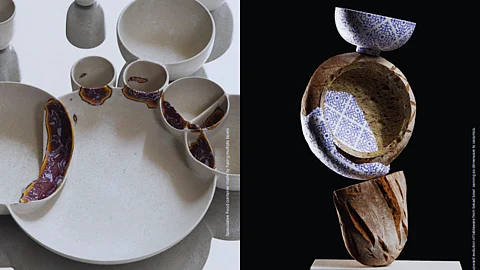What Do Objects Want? : Designer Sundeep Yaya Explores How Objects Shape Our Realities
The objects around us have a function and they exist as a tool to be used. At least that's what we mean when we talk about the objectification of a person; it suggests that they have now become lesser, without agency, that they have died in a way. The highest value an object can have for human beings is its sentimental value that we assign to it. Challenging this one-sided interaction, a research-driven publication by London-based designer Sundeep Yaya, looks at how objects inform our lives and shape our realities.
Colomina B. and Wigley M. in their book Are we human? propose that design presents itself as serving the ‘human’, but its real ambition is to redesign the human. What Do Objects Want? has taken the form of a publication that investigates this agency and influence of objects by deconstructing a group of objects that we consider dinnerware.
Through his practice-based research process, the artist highlights the Acheulean hand axe, a prehistoric object that is considered to have been produced between 1.76 million and 300,000 years ago. Using this hand axe, he contrasts two tales of interaction between humans and objects — the story of human beings' complete agency over these objects that they made, shaping them into what they saw fit for their use, against the story that while humans were chipping away at it, the axe was chipping away back at them, moulding and sculpting their hands.
This tear-drop shaped rock was one of the first objects designed by humans and yet its utility is still unknown to us. However, we do know that it contributed in shaping the modern human hands. Early humans designed these tools that aided in the evolution of the modern human hands, as our hands evolved to be able to use them better.
In a fascinating, ongoing enquiry, the artist investigates this sense of agency and purpose through a project called Illegible Objects where the journey of a tiny arch-shaped object without any apparent function is documented as it travels from person to person, each time assuming the role of a completely different object, 'fitting into the mould that their lives offer' becoming whatever they perceive it as from a wine glass stand to a pillow.
Using dinnerware as a genre, designer Sundeep Yaya explores the idea of the ‘counter-form’ or the negative space that is created by the object in question, a dinner plate in this case, and transforms it into a new object based on its concavity. He questions the premise of the object and what defines it — is the form (exterior surface) or its counter form (interior surface)? The artist further explores the inter-relationships of objects with their surroundings and other objects; how just by manipulating the form and counter form of a cup becomes a plate. He calls this connection and dependence between objects the object ecosystem.
What Do Objects Want? is not just a mind-boggling study of space and negative space that define objects, it's a dissection of our own perception that is informed by a highly utilitarian worldview. Embodying the same investigative principle of Ways of Seeing by John Berger, Sundeep's publication is a riveting trip into the world of design that through the interpolations of objects might just make you ponder your place in the world.
You can read What Do Objects Want? here.


